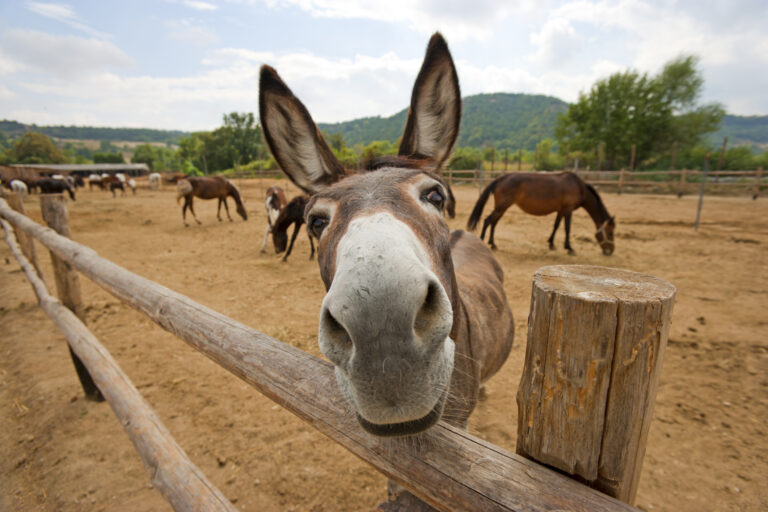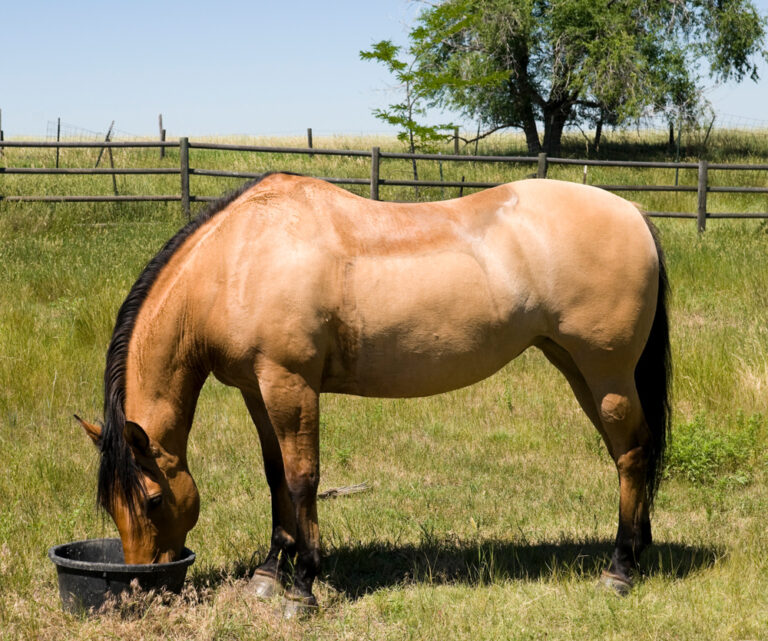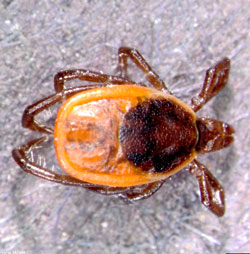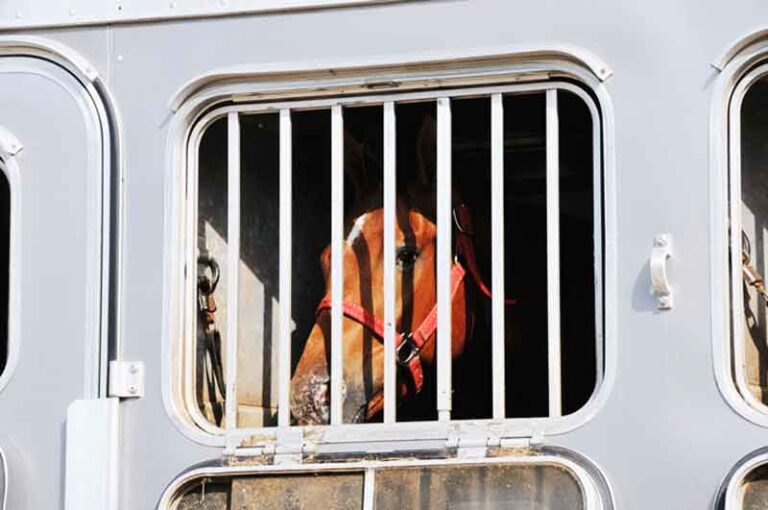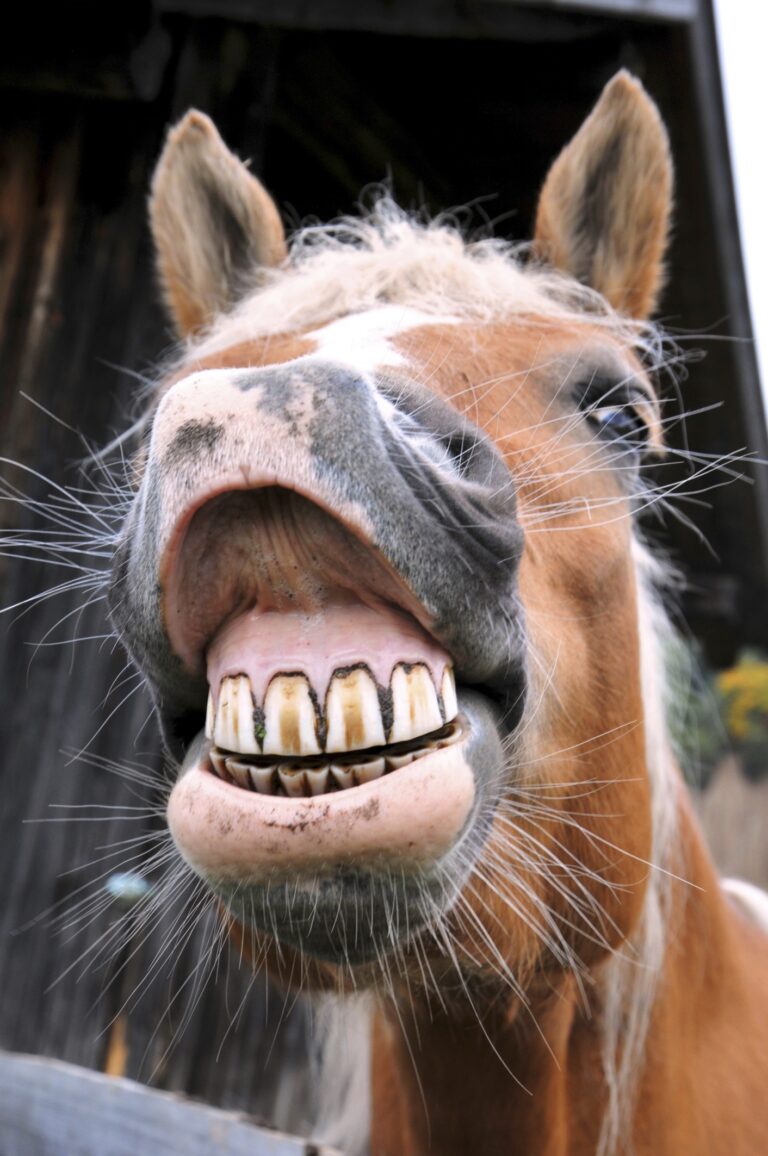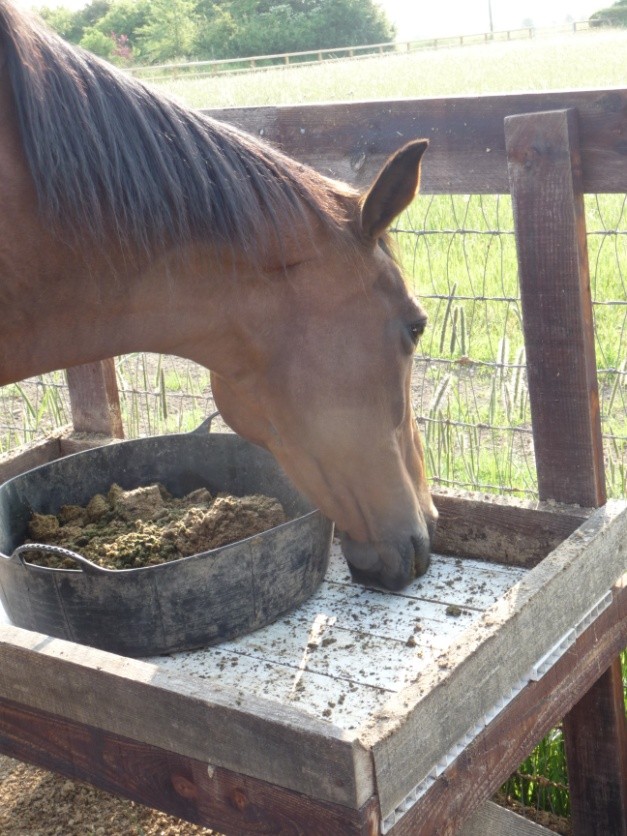Hauling horses in hot weather means you need to be thinking of what’s going on in the trailer. When you’re sitting in the truck with the air conditioning cranking, it can be easy to forget just how hot it can get in the trailer behind you.
There are reports that a horse riding in a trailer exerts as much muscular effort as if he had walked the whole way. Trailering can zap a horse’s energy and his hydration.
Keep in mind that fitness affects a horse’s ability to tolerate travel. Unfit horses should not be hauled long distances or should be given frequent rest breaks. Owners/haulers also should make sure the horse is rested before and after travel.
Hauling Tips
Here are some tips to help your horse handle the heat and stress of hauling in hot weather.
- Provide sufficient ventilation by opening windows and vents as much as possible during hot weather. Use screens or bars over the window openings so you can leave the drop-down windows open to allow fresh air to circulate.
- Use a fly mask to protect your horse’s eyes against debris when windows are open.
- Some owners like to put shipping boots on horses. However, boots can create a lot of heat, especially during hot shipping conditions. Owners should weigh the benefits of protection against heat stress.
- Install a thermometer in the trailer to give you an idea of the conditions your horse is experiencing. Then, make adjustments accordingly. This will include frequency and length of rest stops or time of day to travel.
- Stop at least every four hours to allow the horse to rest for 20-30 minutes. This is a good time to provide fresh water, refill the hay bags. Eating, especially hay, without hydration can increase impaction colic.
- During your stop, clean feces or feces- and urine-soaked bedding from the trailer. That will cut down on microbes and urine fumes in the trailer atmosphere, which helps respiratory tract health.
- It is also good practice to unload your horse when possible and to let him walk around and graze a bit. Lowering his head helps clear the airway of accumulated particulates and debris. HOWEVER, only unload in a safe area and if you know the horse will re-load easily.
- In summer heat, when at all possible, haul your horses in an insulated trailer and try to travel during the coolest parts of the day and night. In really hot weather, it helps to soak your horse’s neck, chest and legs during rest stops to cool him off.
- Check traffic patterns for summer travel. For example, if you have to drive through a city, know when the best times will be to avoid traffic and not have horses standing for long periods in a hot trailer. Choose alternate routes to avoid heavy city traffic. Traveling after sundown or very early in the morning will offer cooler temperatures for horse transport.
Final Words
Monitor your horse’s vital signs at every opportunity when hauling. Keep a close eye on feed and water intake, as well as manure and urine output while on the road. This enables you to identify simmering problems before they turn into a full-blown crisis.
Further Reading
- Equine Biosecurity While Traveling. Dr. Nancy Loving. MySeniorHorse.com
- The California Biosecurity Toolkit for Equine Events is an excellent resource for veterinarians, event managers, and horse owners.
- AAEP’s General Biosecurity Guidelines has a summary of biosecurity information.
- The Equine Disease Communication Center offers how-to biosecurity videos in conjunction with USEF.
- Is ACTH Testing Affected by Trailering Horses? Kimberly S. Brown. MySeniorHorse.com
- Equine First-Aid Kit. MySeniorHorse.com
-
Nancy S. Loving, DVM, was a performance horse horse veterinarian based in Colorado for most of her career. She has a special interest in helping horse owners understand technical veterinary topics and research.View all posts


